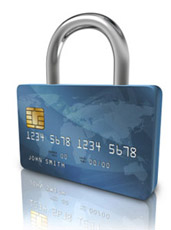
Loans
Latest Articles
Getting a Car Loan with Poor Credit
Auto loans are used by individual borrowers and businesses to purchase a used or new vehicle. The main types are unsecured and secured whereby the vehicle itself serves as collateral. Types of Car LoansDealerships and financial establishments offer auto loans with variable and fixed rates. Fixed...[Read More]What Is a Balloon Loan
A balloon loan is a type of financing with a long term and competitive rate that many borrowers find attractive. Unlike conventional loans, it doesn't amortize and the principal amount is due at the end of the term. BasicsThe mortgage amount is the expected or original loan balance while the total...[Read More]The Dangers of Dealing with Loan Sharks
Loan sharks charge outrageous rates and use unethical and illegal practices to con consumers. Some providers charge up to 100 percent in interest. PracticesLoan providers often assess upfront fees and offer loans with very short terms. They use violence, threats, and other illegal practices to...[Read More]Predatory Lending Practices and Scams for Savvy Borrowers to Avoid
There are different predatory lending practices and scams that aim to con consumers out of their money.Signs and Red Flags of Predatory Lending Some red flags indicate that certain loan providers use predatory practices. These include loan flipping, yield spread premiums, very high prepayment...[Read More]A loan is money borrowed from a financial institution and paid within an agreed period of time. The terms specify the repayment schedule, the rate of interest, the principal amount, late fees and penalties, and other conditions. The principal is the money borrowed or the outstanding balance to be repaid. Borrowers make monthly payments to reduce the principal amount. The term is also part of the terms and conditions and refers to the period during which the money should be repaid. Alternatively, the borrower may attempt to renegotiate and extend the term.
Interest Rates and Creditworthiness
The interest rate is a certain percentage that lenders charge for the use of assets. Banks use a reference rate that is referred to as the prime interest rate. It is offered to creditworthy customers and affects the rate available for other financial products such as personal loans, small business loans, and mortgages. Low-risk borrowers with an excellent credit score are usually offered an attractive interest rate.
Basic Types
There are two types of financing – open-ended or revolving credit and one-time amount that is repaid in equal installments. Revolving credit comes in different forms such as credit cards, lines of credit, home equity lines, and others. Basically, you use some portion of the money, pay it back, and can borrow again.

Credit Lines, Uses, and Benefits
Personal lines of credit are one variety extended to borrowers who need money for a vehicle purchase, vacation, home renovations and repairs, medical expenses, and unexpected emergencies. There are some important differences between lines of credit and personal loans. The former help borrowers to lower their monthly payment and consolidate all outstanding balances with a high interest rate. Personal loans are useful in other ways – they come with fixed monthly payments and interest rate. This makes it easier for borrowers to budget and repay their debt. Borrowers are offered a lump sum upfront. With lines of credit, you can borrow only the amount you need, and there is no need to re-apply. Payment options also differ. Borrowers can pay toward the outstanding balance at any time during the loan term. The monthly payments go toward the principal and interest. Those who draw on a credit line can pay at any time and are offered a variable interest rate, which is usually lower than that on personal loans.
Secured Financing and Types of Collateral
Loans are generally divided into unsecured and secured, the latter being offered against collateral. The type of collateral depends on the credit. Those who apply for auto financing, for example, may offer sources of collateral such as their savings account, stock certificates, home equity, the vehicle itself, or another vehicle. Common type of collateral for a commercial financing include a home or vehicle, inventory, and deposits, shares, stocks, and other marketing securities. Other types of collateral are gas and oil and equipment and machinery such as drilling rigs and trucks. Applicants can also offer buildings and real estate to secure the loan. Unsecured loans are another variety that is available to creditworthy borrowers. Also known as personal and unsecured loans, they come with a higher interest rate.
Commercial Financing and Uses
Other kinds of financing include commercial and small business loans. The first type refers to funds offered to business entities and can be used to finance operations, real estate purchases, and capital expenditures. Companies use the funding to purchase supplies and materials, meet payroll, and cover their operational expenses. They also need money to buy machinery and equipment that is needed to optimize their operations. Business credit is offered to companies and non-individual entities. Businesses use the funds to pay wages, buy equipment, and pay suppliers. Banks and other financial institutions offer financing to non-profits, partnerships, limited liability companies, sole proprietors, as well as corporations.
Loans for Student-related Expenses
In addition, financial institutions offer mortgages, student, auto, and payday loans. Student financing is offered to full-time students who need money for tuition and school-related expenses. The money is used for textbooks, school supplies, room and board, etc. Such loans come with a low interest rate, and borrowers start making payments once the grace period is over. This happens when the student graduates/completes education.
Auto Loans, Types, and Terms
Auto loans allow borrowers to acquire a new or used vehicle. Banks, credit unions, online lenders, and other establishments offer car financing. The interest rate and terms depend on the borrower’s credit history. People with less-than-perfect credit scores often resort to subprime auto lenders. The latter are usually offered to borrowers with limited credit histories and come with prepayment penalties and a higher rate of interest.

Payday Loans to Get Quick Cash
Payday and bad credit loans are also intended for borrowers with poor or no credit. This happens when a debtor has defaulted, missed payments, or made late payments. Such people have access to credit but at a higher interest rate. Payday loans are one option for such borrowers and are offered with a very high interest rate. Also known as a payday advance, this is a short-term unsecured credit offered against a post-dated check.
Types of Mortgages and Amount of Down Payment
A mortgage is another type of loan and a debt instrument that is secured by collateral. The borrower pledges a property temporarily as a promise to repay the debt. There are different types of mortgages, including adjustable rate, interest only, option ARM, and piggyback mortgages. There are equity loans that are junior and come in different types – lines of credit, fixed, and adjustable. Other mortgage types include reverse, closed and open, multiple term, high-ratio, etc. Regardless of the type of financing, borrowers are usually required to make a down payment. It varies between 5 and 20 percent of the amount. A down payment is money paid upfront, which reduces the outstanding balance. Some borrowers decide to take another loan to pay off their existing debt. This is called mortgage refinancing. In general, refinancing is a practice of increasing the amount and/or extending the term of repayment. This happens when an individual borrower revises the schedule of repayment. The old debt is replaced with a new with better terms and conditions, which makes payments more affordable.
Bridge Loans to Secure Capital
A bridge loan is another debt instrument used by businesses and individual borrowers until they secure permanent financing. It is to be repaid over a short period of time. The term of repayment varies from 2 weeks to 3 years. Financial institutions usually require some collateral and offer high interest rates. This financial instrument is also known as a swing loan, gap financing, and interim financing. It is commonly used by companies as a way to secure working capital. Individual borrowers resort to bridge loans when selling and buying a property.
Government Loans and Alternative Forms of Financing
These loans are offered by financial institutions such as banks, credit unions, caisses populaires, and building societies. They form another category. The money can be used for different purposes such as starting or running a business, buying a home, paying school-related expenses, and more. Generally, this is financing that is subsidized by the government, and financial institutions are offered protection against defaults. Governments offer different types of financing, including grants, subsidies, financial aid, and student and small business loans. The type of credit and the terms depend on the status of the applicant, and the borrower doesn’t pay interest in some cases.



